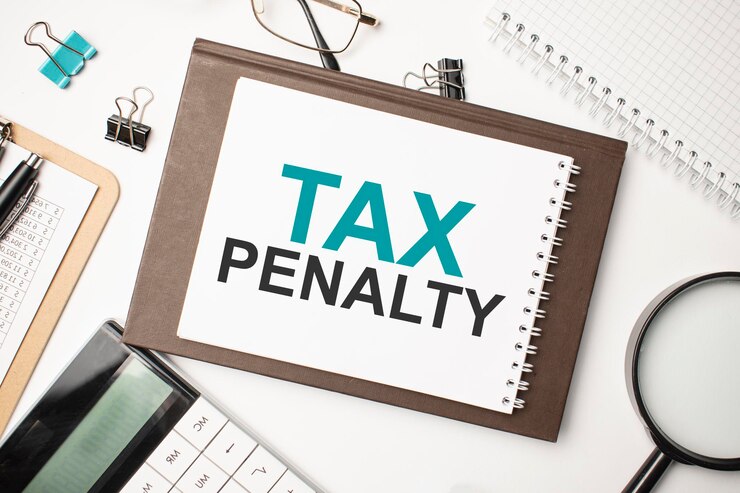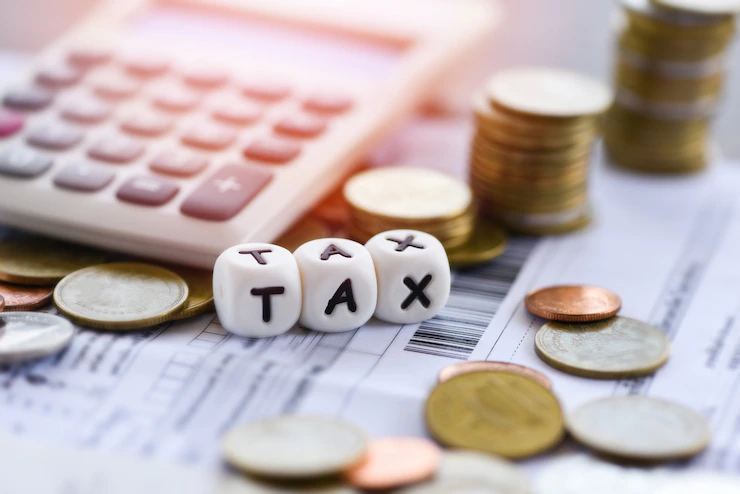How To Calculate Underpayment Penalty
6 Mins Read
Published on: 04 August 2022
Last Updated on: 11 November 2024

toc impalement
If you owe the IRS money and don’t pay on time, you may be subject to an underpayment penalty. The first step is determining how much you owe to the IRS.
The IRS has a website that allows you to input your income tax information. The IRS will then calculate your taxes and tell you what you need to pay.
You should have a copy of your W-2 form when you are done.
Underpayment Penalty Calculation Formula

Calculating the underpayment IRS penalty based on your income and tax liability is here.
| IRS Revenue Amount: | = Tax Liability |
| Tax Liability | = Income Taxes Owed |
Now you can calculate the amount of the underpayment penalty.
| Underpayment Penalty Percentage | = 100% * [IRS Revenue Amount] / Tax Liability |
| IRS Revenue amount | = Tax Liability |
For example: If you owe the IRS $1,000 and your tax liability is $500, you would calculate the underpayment penalty as follows.
$1,000 – $500 = $500 x 100% = $100 Underpayment Penalty
It’s important to note that the IRS uses two numbers when calculating the underpayment penalty. The first number is your income tax liability, and the second number is your total tax.
You can find both numbers on your W-2 form.
Now you need to figure out if you have a 1040-EZ or 1040-NTEZ.
If you have a 1040-EZ, your total tax will equal your income tax liability.
If you have a 1040-NTEZ, your total tax will not equal your income tax liability.
In that case, your income tax liability will be less than your total tax, and you will be subject to an underpayment penalty.
Here Are Some Examples To Clarify Things:

Example 1:
We will assume that you are single and have no dependents.
Your income tax liability is $0
Your total tax is $0
As a result, your income tax liability is zero, and your total tax is zero.
Your underpayment penalty percentage is zero.
So, in this case, you do not have to pay any underpayment penalty.
Example 2:
We will assume that you are single and have two children.
Your income tax liability is $1,000
Your total tax is $2,000
As a result, your income tax liability is $1,000, and your total tax is $2,000.
Your underpayment penalty percentage is $100.
Therefore, you will be charged an underpayment penalty of $100.
How To Find Underpayment Penalty

The IRS has a list of common errors that people make, and when these errors are committed, they could result in a penalty. One of these penalties is called an underpayment penalty.
If you owe the government money, paying it off as quickly as possible is a good idea. However, if you don’t pay taxes on the right amount, you could get hit with a penalty.
One of the most common penalties people get is an underpayment penalty. This is when you make a tax payment on the wrong amount of money.
The IRS defines this penalty as any amount owed but not paid within the required time. They say this is the amount that should have been paid, less any money that was paid in the year you were late.
For example, you owe the government $1,000, but you only paid them $500. Then you get an underpayment penalty of $500.
Let’s say you owe $1,000, and you only pay $800. Then you get a penalty of $200.
If you owe them money, it is a good idea to figure out how much money is due. After you know what your taxes are, you can work on paying them off as quickly as possible.
In What Case Should A Consumer Be Liable For An Underpayment Penalty

An underpayment penalty is a tax assessment made by the Internal Revenue Service (IRS) when taxpayers fail to report income on their tax returns. The underpayment penalty is one of the main tools the IRS has to collect taxes owed.
While the penalty is generally assessed at the rate of 10% of the tax owed, there are exceptions to this rule.
For instance, if a taxpayer owes $2,000 in taxes but doesn’t report the full amount, the penalty would be $200. However, if the IRS determines that a taxpayer owes more than $2,000 in taxes, the penalty could be assessed at a higher rate of 25% of the taxes owed.
An underpayment penalty is a tool the IRS uses to collect back taxes and ensure that the government gets paid.
It is possible to avoid paying the underpayment penalty by reporting the full income and taxes due.
However, if the IRS discovers that income was earned but not reported, then penalties may be imposed. Underpayment penalties may be issued to taxpayers who fail to report or underpay taxes for some reason.
If a taxpayer earns income in cash, they are usually required to file a tax return and pay any taxes owed.
However, they may be required to report this income to the IRS if they receive it in a check.
If a person receives income from a job or investment in real estate, they must report this income on a tax return and pay the taxes that are owed.
If a taxpayer fails to report income or pay taxes on this income, then penalties may be issued against them.
Some examples include not filing a tax return, failing to report income, not paying taxes on income, or receiving a refund that is less than the amount that was withheld.
Underpayment penalties are assessed against taxpayers who do not properly report their earnings and taxes.
This can result in a financial burden for the taxpayer as they could be liable for a significant fine.
The IRS does not set specific rules that dictate which individuals are responsible for these penalties.
But some of the major factors that will determine whether an individual is liable for the penalty include:
- If a taxpayer makes an understatement of income
- If the taxpayer makes a false or fraudulent statement on their tax return
- If the taxpayer failed to pay taxes that they owe
- If the taxpayer received a refund that was less than the amount that was withheld
- If the taxpayer did not report all income earned
- If the taxpayer failed to file a tax return
To know which circumstances are underpayment penalties, you need to understand the term “understatement.”
You May Also Check: A Breakdown to Claiming The R&D Tax Credit Toward Payroll
What Are The Factors That A Court Will Take Into Account When Calculating An Underpayment Penalty?

The IRS must first determine the amount of tax that was due to determine the penalty amount. When an individual fails to file a return or underreports their income, they are considered liable for a certain amount of tax owed.
This amount will depend on how much income the taxpayer failed to report and how much tax was withheld from their paychecks.
The courts will consider several different factors when determining the penalty amount. In particular, the following factors will be relevant:
- Income levels exceed those that were reported on the taxpayer’s return.
- Whether the taxpayer filed a return at any time during the year, including an extension.
- Whether the taxpayer received a 1099 form or other documentation that they are required to file with the IRS.
- Whether the taxpayer has been previously notified that they are required to file a return.
- Whether the taxpayer had an extension to file their return.
- Whether the taxpayer has claimed deductions on their tax return.
- Whether the taxpayer has a credit card, and if so, whether they have a history of paying off their balance each month.
- Whether the taxpayer owes money to the IRS, such as back taxes or outstanding fines.
- Whether the taxpayer can provide a satisfactory explanation for why they did not report all of their income.
Conclusion
It may be tempting to pay the underpayment penalty and ignore it simply. After all, your lender has already made you an offer. But, the law and regulations governing underpayments are very strict.
Several factors will play a part in deciding whether you have to pay back the money you owe and how much you owe. This article provides a comprehensive list of all the factors that a judge will consider, along with some practical tips to help you calculate your potential underpayment penalty and avoid paying too much.
Read Also:


















Comments Are Closed For This Article